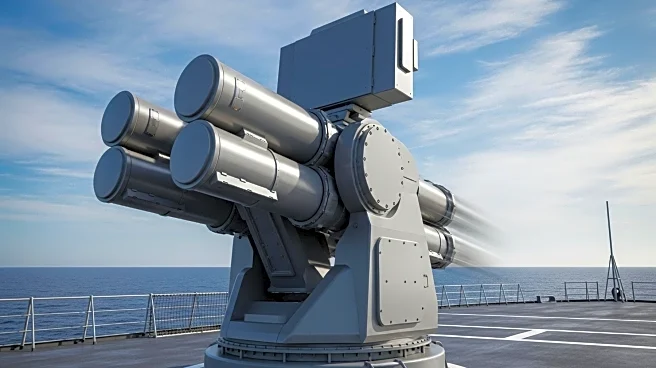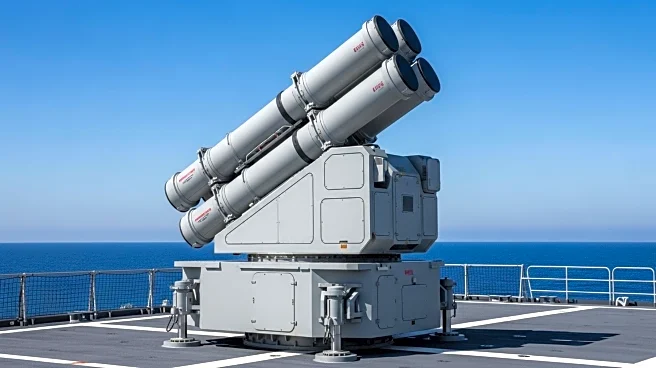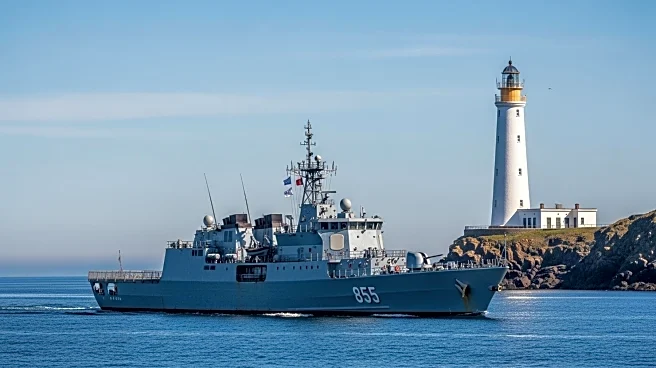What's Happening?
The NATO SeaSparrow Consortium, led by the United States, is planning the development of a new variant of the RIM-162 Evolved SeaSparrow Missile (ESSM). This initiative follows the completion of the ESSM Block 2, which achieved operational capability with the US Navy in 2021. The new variant, referred to as the Next Significant Variant (NSV), will involve enhancements in operational techniques and technical capabilities. The consortium, comprising 12 countries, is spearheaded by Raytheon, responsible for development, production, integration, and sustainment activities. The ESSM Block 2 introduced a dual-mode radar seeker, increasing the missile's diameter and improving its guidance and control systems.
Why It's Important?
The development of a new ESSM variant is crucial for maintaining naval defense capabilities and ensuring the security of NATO member countries. The upgraded missile will enhance ship self-defense systems, providing better protection against aerial threats. This initiative reflects ongoing efforts to advance military technology and strengthen international defense collaboration. The involvement of multiple countries highlights the importance of cooperative defense strategies in addressing global security challenges. The new variant could improve the effectiveness of naval operations and contribute to the strategic deterrence capabilities of NATO forces.
What's Next?
The NATO SeaSparrow Consortium will continue to outline requirements for the new ESSM variant, with industry briefings planned to discuss operational techniques and technical capabilities. The development process will involve collaboration among consortium members and industry partners, focusing on innovation and integration. The successful deployment of the new variant could lead to further advancements in missile technology and defense systems. The consortium's efforts may also influence future defense policies and strategies within NATO.













